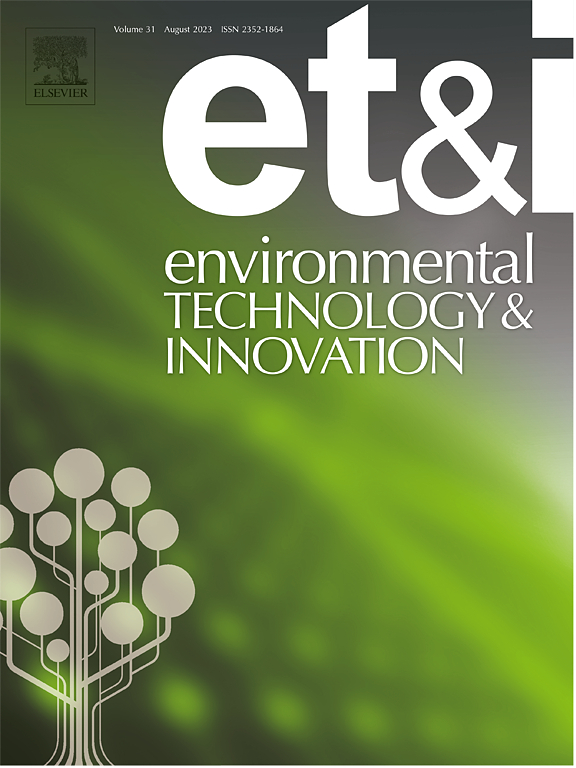Optimization and stability of a reusable laccase-polymer hybrid film for the removal of bisphenol A in water
IF 6.7
2区 环境科学与生态学
Q1 BIOTECHNOLOGY & APPLIED MICROBIOLOGY
引用次数: 0
Abstract
Laccases are a group of versatile and green biocatalysts with high efficiency for the degradation of a wide variety of environmental pollutants. However, the feasibility of free laccase applications is hampered by enzyme inactivation due to exposure to denaturing conditions and difficult recovery, which limits reuse and continuous process design, resulting in high costs. Enzyme immobilization technology is a promising way of overcoming these drawbacks. In this work, laccases from two fungal sources, Myceliophthora thermophila and Trametes versicolor, were immobilized for the first time by covalent interaction (azo-linkages) on a film-shaped polyacrylic material. Optimal immobilization parameters were 10 U/mL enzyme load, 1 h and 25 ºC. The resultant immobilized laccases were characterized as a function of pH, temperature, and substrate concentrations (kinetic parameters) and compared with the free enzyme counterpart. The laccase-polymer hybrid (M. thermophila laccase) showed excellent operational and storage stability, retaining 89.8 % of the initial activity after 15 cycles of reuse and 10 days of storage at 4 ºC. Finally, the laccase-polymer films exhibited > 90 % depletion of bisphenol A in water by a dual adsorption-catalysis mechanism. The adsorption capacity ranged from 61.4 % to 30.5 %. GC-MS analysis revealed the degradation products 5,5′-bis-[1-(4-(4-hydroxyphenyl)-1-methyl-ethyl]-biphenyl-2,2′-diol and 3- or 2-methyl-2,3-ditrobenzofuran, as adsorbed compounds, as well as non-degraded bisphenol A. The significance of this research lies in the demonstrated catalytic efficiency of a new, reusable and cost-effective hybrid material for the removal of phenolic contaminants in water. The findings suggest that laccase-polymer hybrids could be a very useful tool for sustainable wastewater treatment.
求助全文
约1分钟内获得全文
求助全文
来源期刊

Environmental Technology & Innovation
Environmental Science-General Environmental Science
CiteScore
14.00
自引率
4.20%
发文量
435
审稿时长
74 days
期刊介绍:
Environmental Technology & Innovation adopts a challenge-oriented approach to solutions by integrating natural sciences to promote a sustainable future. The journal aims to foster the creation and development of innovative products, technologies, and ideas that enhance the environment, with impacts across soil, air, water, and food in rural and urban areas.
As a platform for disseminating scientific evidence for environmental protection and sustainable development, the journal emphasizes fundamental science, methodologies, tools, techniques, and policy considerations. It emphasizes the importance of science and technology in environmental benefits, including smarter, cleaner technologies for environmental protection, more efficient resource processing methods, and the evidence supporting their effectiveness.
 求助内容:
求助内容: 应助结果提醒方式:
应助结果提醒方式:


